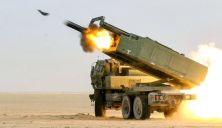On Thursday, Russia used an Oreshnik medium-range ballistic missile for the first time, targeting Dnipro. The attack drew global attention, and on Sunday, Volodymyr Zelenskyy highlighted the rising number of strikes by Shahed drones.
The Ukrainian president stated that 50 out of 73 drones launched on Sunday night were intercepted. In the previous week, Russia had launched a total of 460 Iranian-made drones into Ukrainian airspace.
“Ukraine is not a weapons testing ground. Ukraine is a sovereign and independent state. But Russia continues its efforts to kill our people, sow fear and panic, and weaken us,” Zelenskyy said in a statement on Sunday morning.
Ukraine reports that Russia has established two factories to produce the Shahed 136 delta-wing drones—known in Moscow as Geran-2—in Tatarstan, about 1,600 kilometers from the Ukrainian border. According to a government source in Kyiv, production is running at “hundreds per week.”
These drones are often deployed as soon as they are ready. While easier to shoot down or neutralize than high-speed missiles, they tie up Ukraine’s air defenses and can inflict significant damage with their 50-kilogram warheads when they reach their targets.
Russia is continually modifying its drones to make them more lethal. Earlier this month, the Ukrainian military released footage of a thermobaric warhead, which produces a fiery explosion with temperatures reaching approximately 2,000 degrees Celsius. Such warheads are particularly devastating when detonated inside buildings.
Ukrainian military sources suggest that Russia is working to integrate artificial intelligence into its drones to create “swarms.” These swarms would allow the Shaheds to communicate and coordinate attacks more effectively, potentially overwhelming air defenses. However, the effectiveness of this technology remains unclear.
Zelenskyy emphasized Ukraine’s need for additional air defense systems to counter these growing threats.
“We are working with our partners on this. Strengthening the protection of our skies is extremely important,” he said.
Meanwhile, Ukrainian specialists are developing cost-effective FPV drones, priced under $1,000, to intercept Shaheds. However, their efforts face challenges, as the turbulent airflow generated by the Shahed in flight significantly disrupts the smaller FPV drones’ navigation.
Read also: How to force Putin to peace: Sybiha outlines Ukraine’s plan













